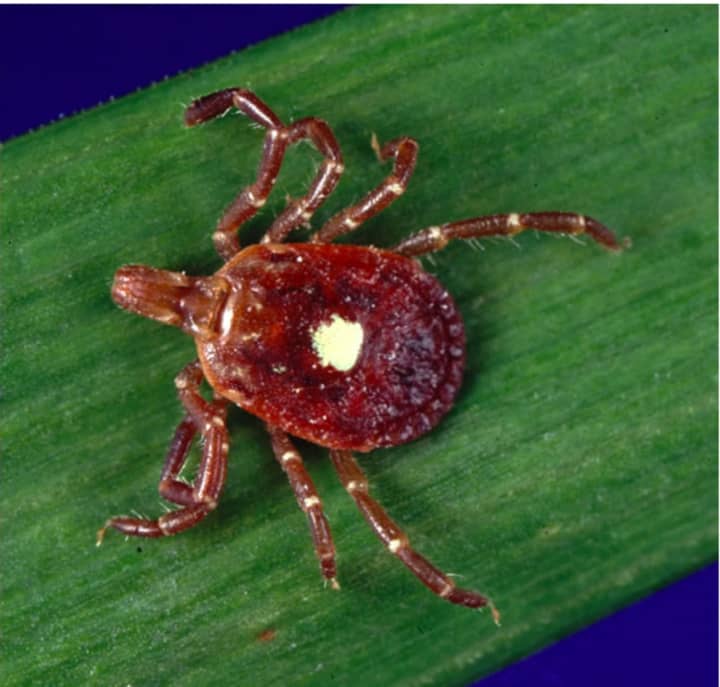The amblyomma americanum tick, known as the lone star tick, is usually found in southern states, especially the Southwest,.
The name comes from the white dot on the female's back, and is not named after Texas, where they are common. (See image above.)
It's one of four types of ticks found in the region that can transmit disease to humans along with deer, dog and woodchuck ticks. The lone star tick is similar in size to the deer tick, at about one-eighth of an inch long.
Already abundant on Long Island, lone star ticks are now being reported throughout New York State. In Connecticut, there have been documented cases in Fairfield, New Haven and Litchfield counties, with the biggest increase in Fairfield County.
A resident of Essex, Connecticut in Middlesex County was one of the first bitten by the tick in the state. It happened five years ago. Bad allergic reactions to red meat required emergency room visits, the family told Daily Voice.
"No one really knew about it five years ago here, even the infectious disease doctor (at a hospital in Fairfield County)," the family said.
Lone star ticks don’t transmit Lyme disease but can carry other serious viral and bacterial diseases. They can also cause an allergy to red meat.
The greatest risk of being bitten exists in early spring through late fall, according to the Centers for Disease Control and Prevention (CDC), which describes the lone star tick as "a very aggressive tick that bites humans."
The nymph and adult females most frequently bite humans, the CDC said.
Click here to follow Daily Voice Fairfield and receive free news updates.


